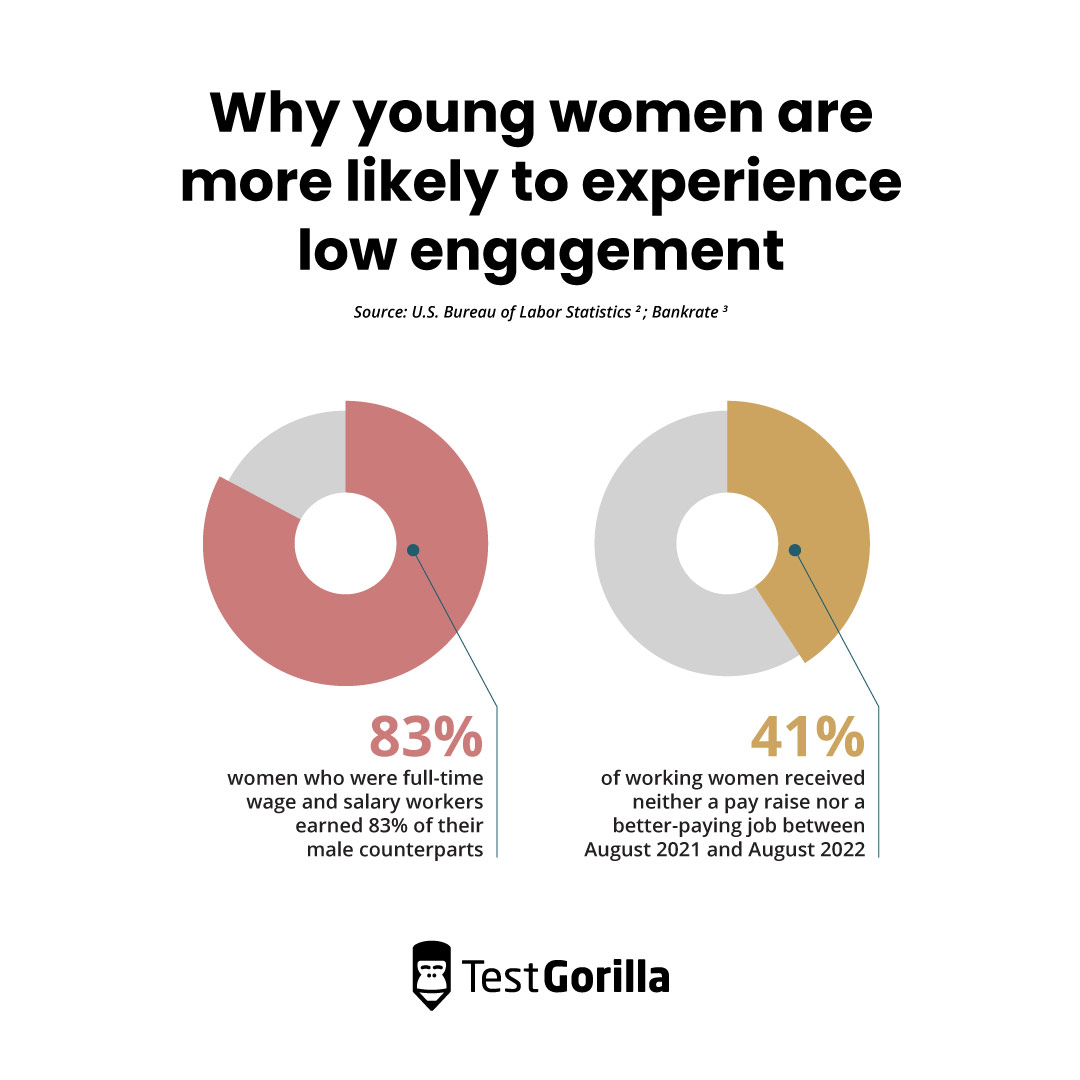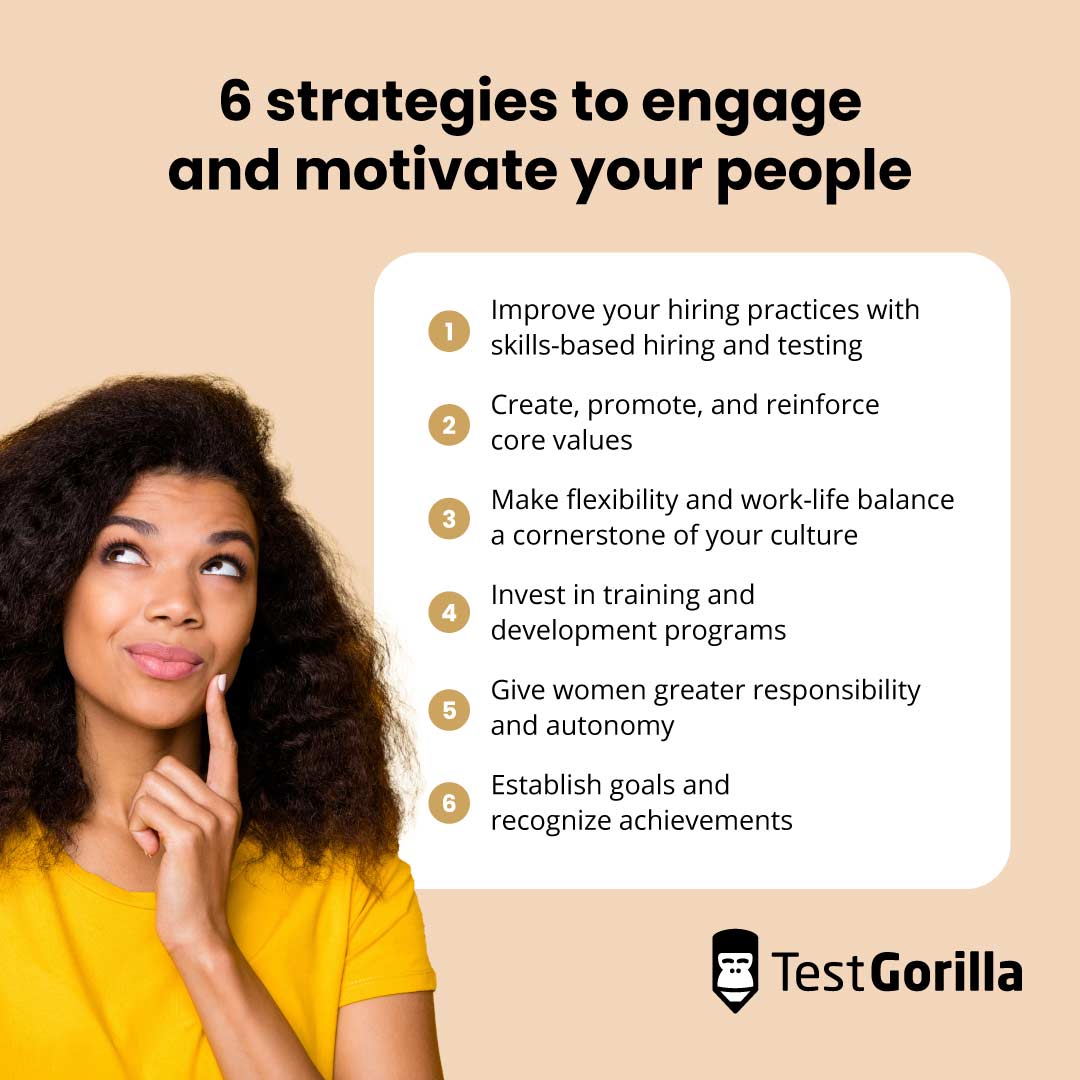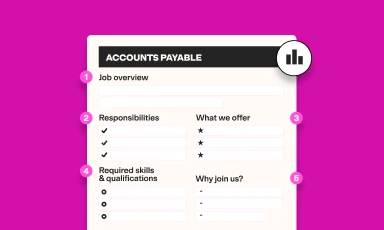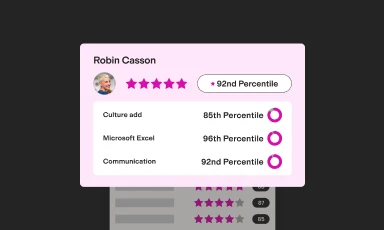The lazy girl jobs trend – how to beat it with a positive work culture
“Love my lazy girl job where I can come in whenever, only have to fill out the same paper work, no dress code, lunch and coffee included, always approved for days off and getting paid well to gossip” - TikTok user
The recent lazy girl job hashtag has exploded on TikTok, with millions of views and interactions from young women who are fed up with the job market’s hustle culture and fixation on ambition and long hours. Instead, they’re after easy work with decent pay, even if it means limited career progression.
Employees wanting greater work-life balance is ultimately a good thing. However, the prospect of new hires actively seeking out undemanding roles that require little commitment is naturally a concern for employers. The trend does, though, speak to the need to combat workplace stress and create more engaging work environments.
In this article, we’ll explore what’s behind the lazy girl job trend, its implications for business performance, and what actions you can take to avoid it in your organization.
What’s with Gen Z and the lazy girl job trend?
“...copy and paste is my passion that’s how i past all my assignments in high school”
In the span of just a few months, TikTok’s lazygirljob hashtag received well over 20 million views, with videos by millennial and Gen Z users describing how simple and flexible their work is, with no pressure and good pay.
While some comments and videos react against boasts of workplace laziness (“When you can’t jump on the ‘lazy girl job’ trend because you’re a first-gen Lawtina college grad who has the determination to become an attorney”), the vast majority of interactions are from people who want a “lazy girl job” for themselves.
A need for better working conditions
However, look between the lines and certain patterns start to emerge. Aside from the value placed on seemingly mundane, repetitive work like copying and pasting, photocopying, and bulk emailing, lots of people talk about flexibility.
For example, with remarks like “You can wear what you want… and you can leave for the day whenever you’re done,” could the lazy gir ljob movement really just be about breaking away from outdated values like formal dress codes and strict working hours?
That might be a bit of a stretch, yet there’s no escaping that references to flexible working practices are a prime concern within the trend.
Meanwhile, many other “lazy girl jobs” appear to be more about improving mental health than actual laziness.
For instance, one video caption says, “Working a calm office job after being stressed and overworked for years,” while another points out, “I’ve gotten two raises since I entered my lazy era and my mental health has never been better.”
Responding constructively to the lazy girl job phenomenon
It would be disingenuous to claim that the lazy girl job trend is solely about women calling for better work environments – there are far too many videos extolling the virtues of minimal work and paid gossip time for that – but there’s no question that many women feel disengaged and unmotivated in the workplace.
Therefore, it’s important to listen to these voices, learn from the lazy girl job trend, and take action to protect your workplace from low employee engagement.
To do this successfully, you’ll first need to understand why low employee engagement occurs, and what causes young women to experience it.
Understanding disengagement in the workplace
Employee engagement can make or break a business. Here we look at the causes of low engagement, its effect on business performance, and why millennial and Gen Z women in your organization could be more susceptible to it.
Factors leading to low employee engagement
A lack of employee engagement can be caused by a huge range of factors, including:
A lack of recognition
Inadequate training and development
Personal challenges
Bad hiring practices
Furthermore, Gallup surveys[1] have found a recent decline in employee engagement, pointing in particular to the following areas:
Clarity of expectations
Connection to the mission or purpose of the company
Opportunities to learn and grow
Opportunities to do what employees do best
Feeling cared about at work
As you might expect, employee disengagement – and “lazy girl jobs” – can be costly to business performance. Here’s why.
How lazy girl job attitudes could affect your teams
In our discussion on quiet quitting, which is when employees gradually become less interested and committed workers, we pointed out that a lack of employee engagement can have far-reaching implications for your organization.
It causes low productivity, inhibits problem solving and innovation, affects loyalty, negatively impacts interpersonal relationships, increases stress on managers and leaders, and leads to higher employee turnover.
In fact, Gallup says that quiet quitting, combined with disengaged employees, costs the world economy $8.8 trillion dollars, or 9% of global GDP.
Why young women are more likely to experience low engagement
Gallup also found that younger people experience a greater loss of engagement at work than older employees in recent years, with women experiencing “more of a decline in engagement than men.”[1]
Elsewhere, research provides some indication as to why this may be the case.
The US Bureau of Labor Statistics reported that, in 2021, women who were full-time wage and salary workers earned 83% of their male counterparts.[2] At the same time, a Bankrate survey found that “41% of working women received neither a pay raise nor a better-paying job between August 2021 and August 2022, despite high inflation.”[3]
Meanwhile, research by McKinsey found that “women are still dramatically underrepresented in leadership” and in 2021 they voluntarily left companies at the “highest rate in years.”[4]
Among the reasons identified for this, the report highlighted microaggressions that undermined women’s authority, as well as being overworked and underrecognized. Another factor is women wanting a better work culture, including greater flexibility and commitment to employee well-being.
Within the context of the gender pay gap, a lack of recognition, hostile work environments, and limited growth opportunities, is it any wonder that young women become disengaged at work? It certainly goes a long way to explaining why the lazy girl job hashtag has gained so much traction on TikTok.
Below, we look at what you can do to engage your employees and keep them from becoming “lazy.”
The best insights on HR and recruitment, delivered to your inbox.
Biweekly updates. No spam. Unsubscribe any time.
6 strategies to engage and motivate your people
Low employee engagement, including factors like a lack of flexibility or opportunities for professional growth, has been a large influence throughout the lazy girl job trend.
Here are six actions you can take to ensure your people remain motivated and excited by their work
Low employee engagement, including factors like a lack of flexibility or opportunities for professional growth, has been a large influence throughout the lazy girl job trend.
Here are six actions you can take to ensure your people remain motivated and excited by their work:
1. Improve your hiring practices with skills-based hiring and testing
Reasons identified by Gallup for low engagement include a lack of suitability to the role and not identifying with the company mission. Skills-based hiring and talent assessments help you address all these key issues.
For example, you can use a Culture add test to evaluate candidates based on their values and behaviors. This allows you to assess their alignment with your organization’s culture and gain insights into each candidate’s personality, including their potential for engagement and productivity.
Research in our 2022 State of Skills-Based Hiring report shows that 92.5% of organizations that used skills-based hiring saw a reduction in mis-hires and 91.2% saw an increase in employee retention.
You can also test for role-specific skills to assess candidates for job suitability and develop complex candidate profiles to minimize the chance of hiring someone who will feel unfulfilled in their role.
With these hiring practices in place, you can significantly improve the employee experience at your organization.
2. Create, promote, and reinforce core values
If you feel that compatibility with your principles and mission is an important factor in role suitability and culture fit, then your organization needs to have clearly defined core values in the first place.
Your core values play a crucial role in describing your company culture. They establish a North Star of principles, attitudes, and behaviors for your teams to turn to during their interactions and decision making, and can even help attract ideal candidates to your open positions.
Establishing and reinforcing your values will help millennial and Gen Z employees have a clearer understanding of expectations and give them the chance to connect with the company mission. Plus, it gives leaders and managers guidelines to better support their teams.
3. Make flexibility and work-life balance a cornerstone of your culture
Flexibility is a recurring theme with the lazy girl job trend, with many TikTok videos pointing to hybrid roles that combine in-office and remote work, allow employees to leave once their work is done, and have hour-long lunch breaks.
Do any of these working practices actually sound lazy at all?
Flexible working policies help you attract top talent, improve employee mental health and well-being, and support employees with personal challenges, like studies or care responsibilities. These practices can even help you level the playing field for working mothers, expanding your talent pool even more.
4. Invest in training and development programs
Inadequate training and a lack of professional growth opportunities are both significant factors in low employee engagement.[1]
By implementing training programs like workshops, peer mentorship, and cross-departmental training, organizations can equip their employees with the necessary skills and knowledge to excel in their roles and foster a culture of continuous learning and improvement.
Internal skills-based testing can further support your employees by assessing skills gaps in your teams, which can inform your L&D strategies and be a springboard for internal upskilling and reskilling.
5. Give women greater responsibility and autonomy
Microaggressions push talented female leaders toward alternative opportunities. Especially in technical and engineering roles, women are more likely to “have their judgment questioned in their area of expertise and to say their gender has played a role in their being passed over for a chance to get ahead.”[4]
By taking measures to support women’s career advancement, you can help give them the resources they need to be ambitious, as well as create the right conditions for their professional success. Increasing your diversity, equity, and inclusion (DE&I) efforts can play an important role in this process, for example by implementing blind hiring practices and skills-based hiring.
Our research found that 91.1% of organizations using skills-based hiring saw an increase in diversity, which can help you build teams where women feel they have more allies and greater support to advance and thrive in their careers.
6. Establish goals and recognize achievements
Celebrating your employees’ professional development and personal wins helps show them how much they’re valued, improving morale and motivating your team to exceed expectations.
Recognizing achievements and setting goals is key to successful performance management, which helps you improve individual and organizational performance through strategic milestone setting, assessment and feedback, and career planning.
Practices like setting up a “wins” channel in your team’s Slack, calling out exceptional performance in your monthly all-hands meetings, and running regular 1:1s and performance reviews all directly help counteract common causes of low employee engagement.
Is a “lazy girl job” what women really want?
With more than 20 million views at the time of this writing, the lazy girl job trend still has a fair way to go if it’s to match TikTok’s most popular hashtags, which rack up billions of views. However, it can give you an insight into some of your employees’ and candidates’ fundamental professional concerns.
The trend serves as a warning of what can happen if you fail to promote DE&I in your organization and facilitate professional growth among millennial and Gen Z women. It also points out the importance of assigning employees roles that match their skills and making them feel valued with work policies that respect their individual needs.
By reviewing and reinforcing your organization’s core values, implementing skills-based hiring processes that focus on job suitability, recognizing good work, and empowering your most talented employees, you can give women the conditions they need to flourish.
All of which will hopefully keep those lazy girl job viewing figures at bay.
Stop your roles from becoming lazy girl jobs
Use skills-based hiring for job suitability and culture add to hire motivated employees who want to excel. Read The State of Skills-Based Hiring 2024 report to learn more
Sources
“U.S. Employee Engagement Needs a Rebound in 2023.” (2023). Gallup. Retrieved on September 7th, 2023. https://www.gallup.com/workplace/468233/employee-engagement-needs-rebound-2023.aspx
“Highlights of women's earnings in 2020.” (2021). U.S. Bureau of Labor Statistics. Retrieved on September 7th, 2023. https://www.bls.gov/opub/reports/womens-earnings/2020/pdf/home.pdf
“Survey: Half of workers who got a raise or higher-paying job say their pay didn’t keep up with inflation.” (2022). Bankrate. Retrieved on September 7th, 2023. https://www.bankrate.com/personal-finance/pay-raise-survey-september-2022/
“Women in the Workplace 2022.” (2022). McKinsey. Retrieved on September 7th, 2023. https://www.mckinsey.com/~/media/mckinsey/featured%20insights/diversity%20and%20inclusion/women%20in%20the%20workplace%202022/women-in-the-workplace-2022.pdf
Related posts
You've scrolled this far
Why not try TestGorilla for free, and see what happens when you put skills first.





















